Grupos de investigación en IOBA
Grupo de investigación: Retina
El Grupo de Retina del IOBA se creó a la vez que el propio instituto. A lo largo de los años se ha ido consolidando y en estos momentos está acreditado como grupo de investigación reconocido (GIR) de la Universidad de Valladolid (nº 400) y como Unidad de Investigación Consolidada (UIC) por la Junta de Castilla y León (nº 238), recientemente renovada (2020).
El objetivo del grupo es la de proporcionar soluciones a determinadas patologías retinianas que aún carecen de ellas con una orientación plenamente traslacional.
Para ello se trabaja en las siguientes líneas de investigación, tanto en proyectos preclínicos como clínicos:
- Neuroprotección en la retina
- Terapia celular en patología retiniana
- Vitreoretinopatía Proliferante
- Patología Degenerativa y Hereditaria de la Retina
- Seguridad de productos sanitarios en Oftalmología
Además, se realizan ensayos clínicos, tanto de los denominados comerciales como de investigación clínica independiente.
IOBA Retina Group was created along with the institute itself. Over the years it has been consolidated and at the moment it is accredited as a recognized research group (GIR) of the University of Valladolid (number 400) and as a Consolidated Research Unit (UIC) by the Junta de Castilla y León (number 238), recently renovated (2020).
Retina group’s objective is to provide solutions to certain retinal pathologies that still lack them with a fully translational orientation.
To do this, we are working in the following lines of research, both in preclinical and clinical projects:
- Neuroprotection in the retina
- Cell therapy in retinal pathology
- Proliferating Vitreoretinopathy
- Degenerative and Hereditary Diseases of the Retina
- Safety of medical devices used in Ophthalmology
In addition, clinical trials are conducted, both commercial and independent clinical research (investigators-driven).
Grupos de investigación
Finalidad
La finalidad de este grupo de investigación es dar solución a problemas aun no solventados en patologías retinianas: identificando factores de riesgo, estudiando la patogénesis y proponiendo nuevas dianas terapéuticas, así como incorporación de las terapias avanzadas (terapias celular y génica) y el análisis de la seguridad de productos sanitarios de uso intraocular
Its aim is to provide solutions to problems not yet solved in retinal pathologies: identifying risk factors, studying the pathogenesis and proposing new therapeutic targets, as well as the incorporation of advanced therapies (cell and gene therapies) and the analysis of the safety of medical devices for intraocular use
¿Cómo trabajar con el grupo?
Dirigirse a cualquier de los investigadores del grupo preferiblemente por correo electrónico:
How to contact us?
Contact any of the researchers in the group preferably by email:
pastoridoate.salvador@gmail.com
Dirección e investigadores principales:
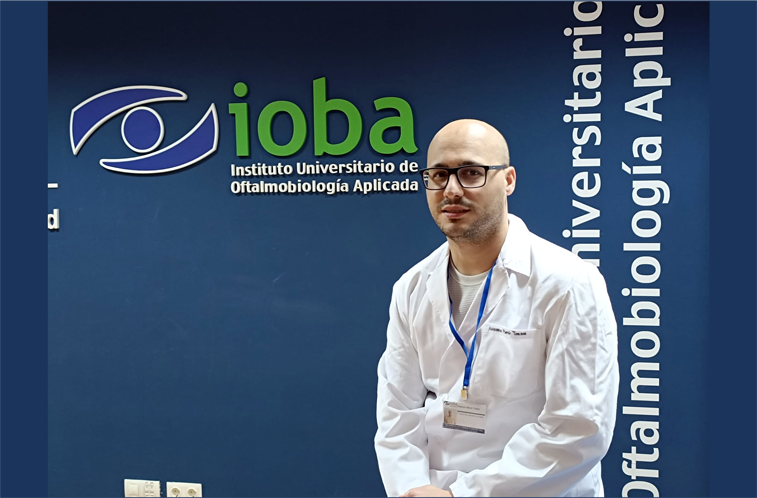
Alejandro Martín Toribio
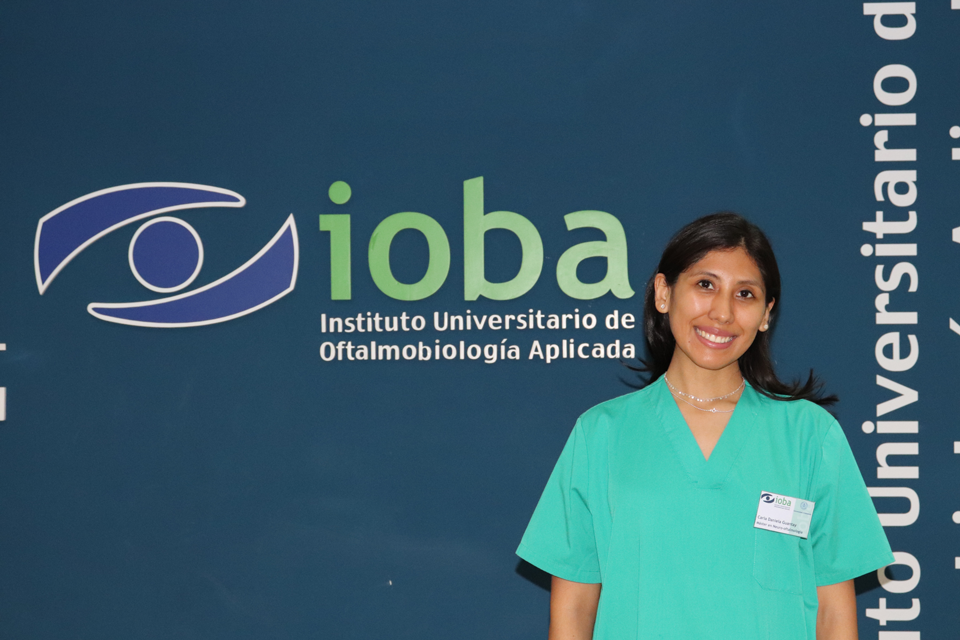
Carla Daniela Guantay Solís
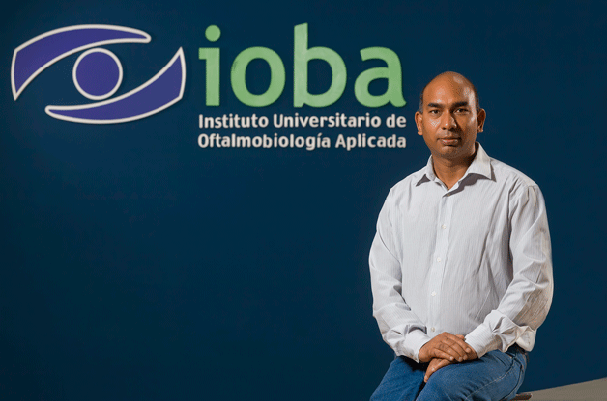
Dr. Girish Kumar Srivastava
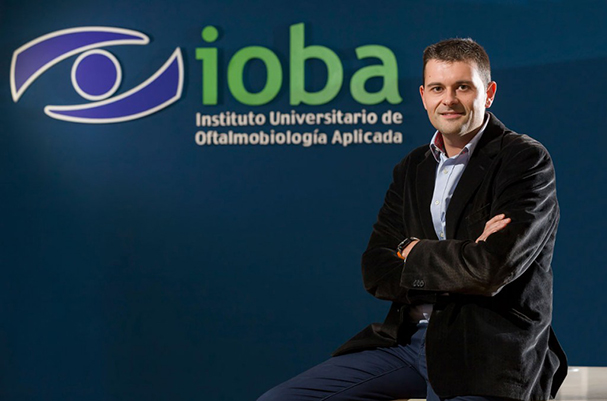
Dr. Iván Fernández Bueno

Dr. José Javier Castrodeza Sanz
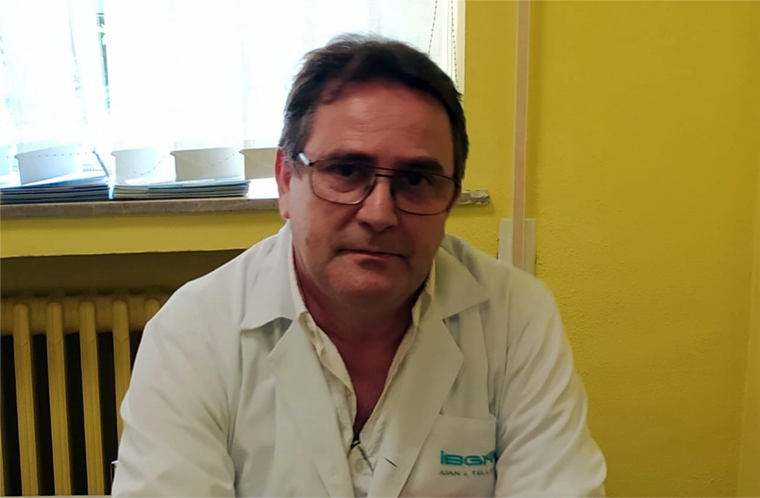
Dr. Juan José Tellería Orriols
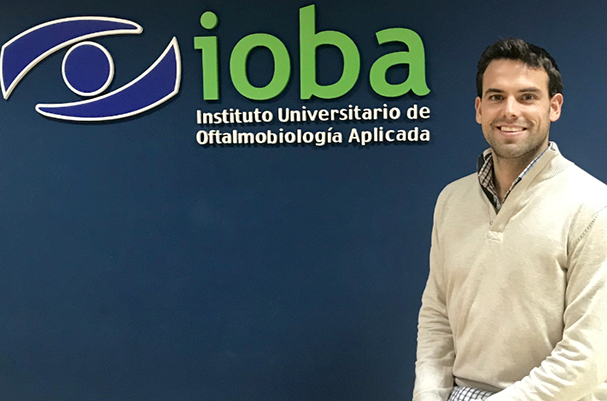
Dr. Ricardo Usategui
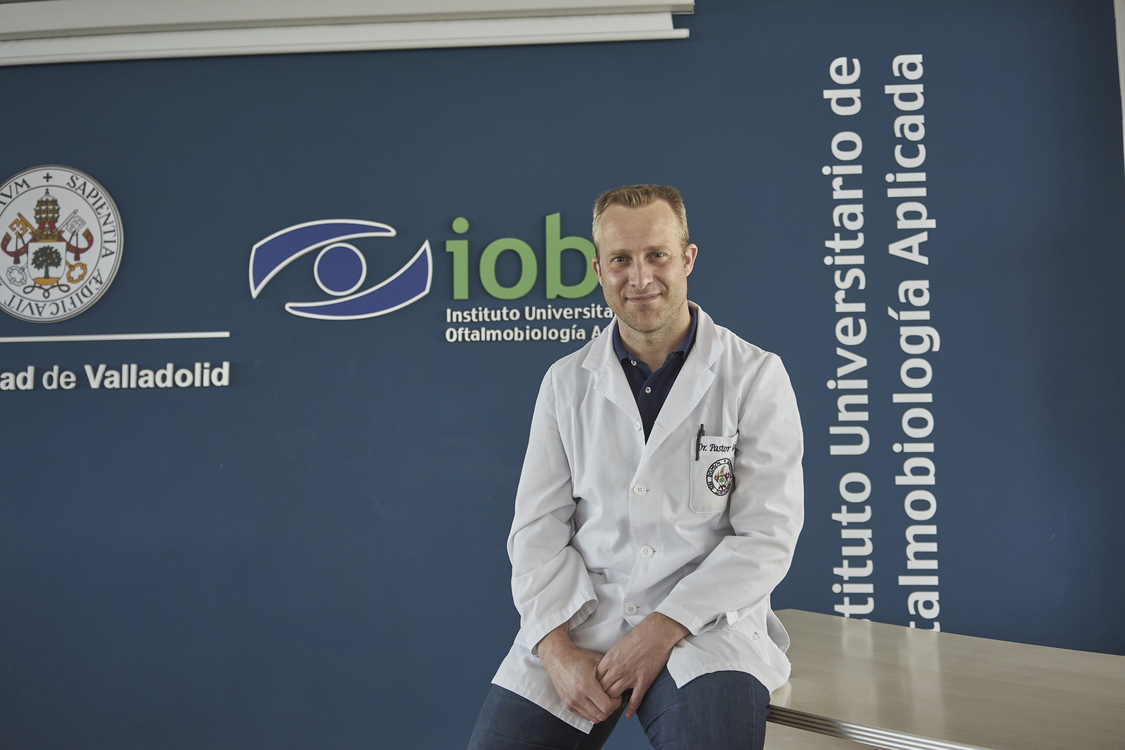
Dr. Salvador Pastor Idoate
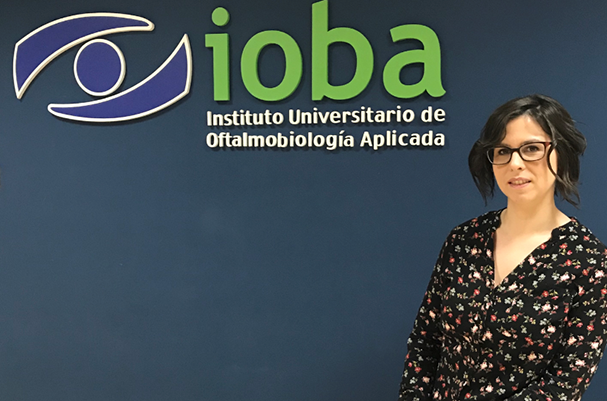
Dra. Cristina Andrés Iglesias
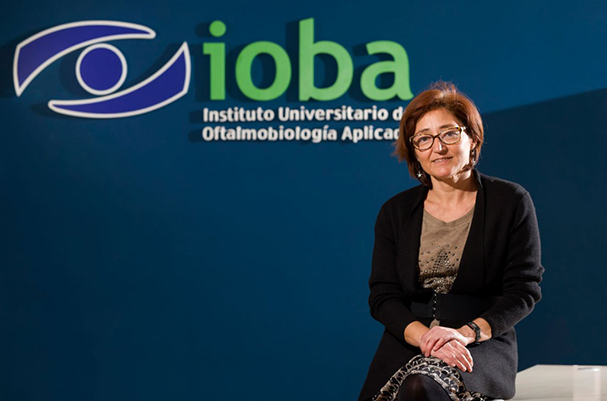
Dra. Mª Rosa Sanabria Ruíz-Colmenares
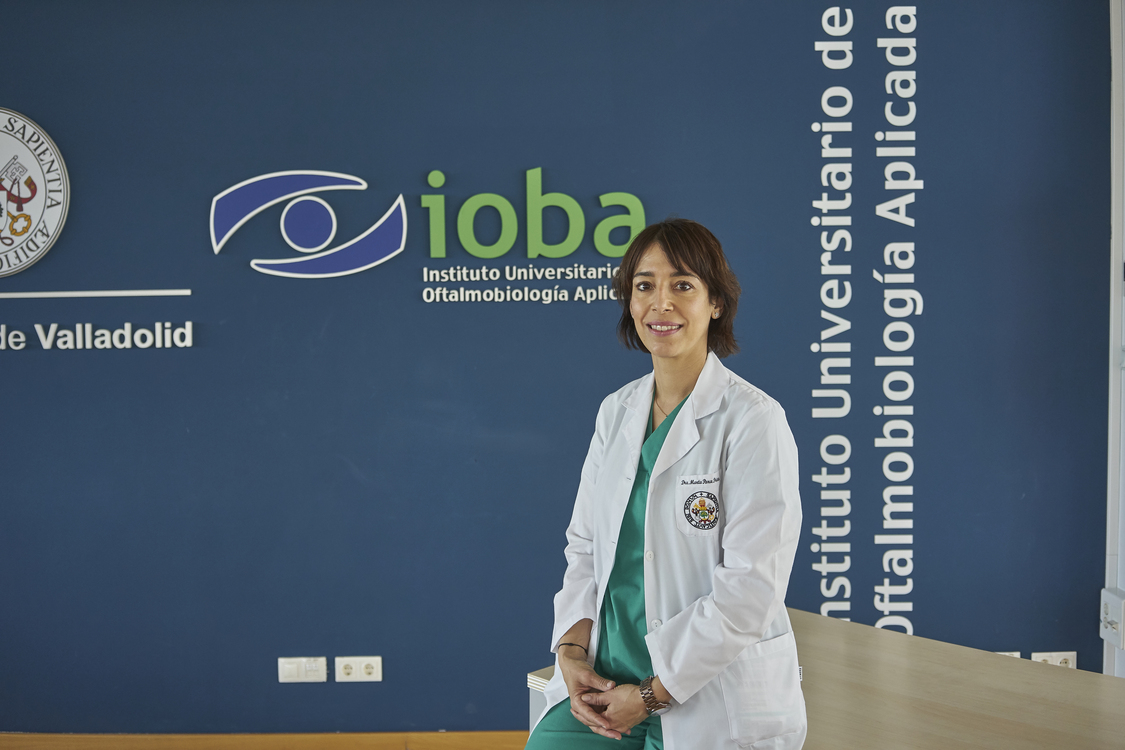
Dra. Marta Para
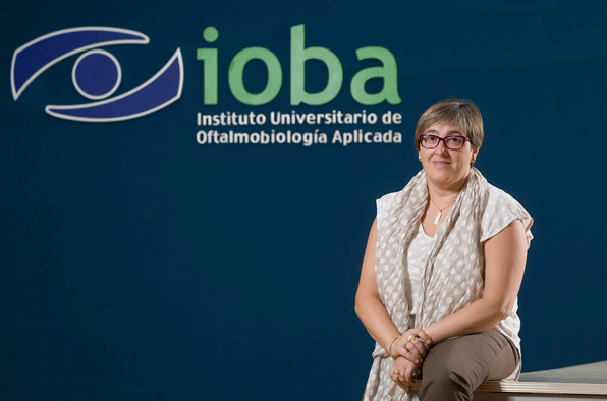
Dra. Rosa Coco Martín

Prof. Antonio Dueñas Laita
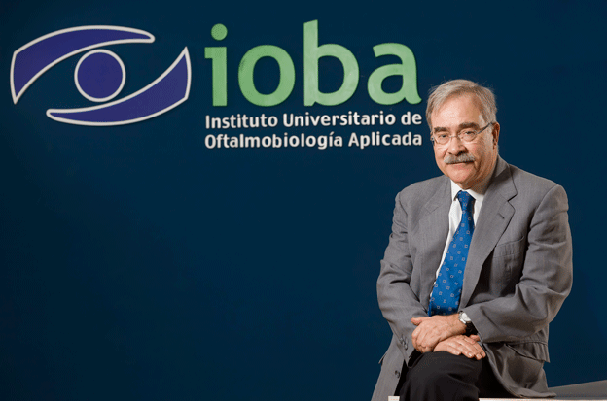
Prof. José Carlos Pastor Jimeno.
Resto de equipo del grupo

Alejandro Martín Toribio
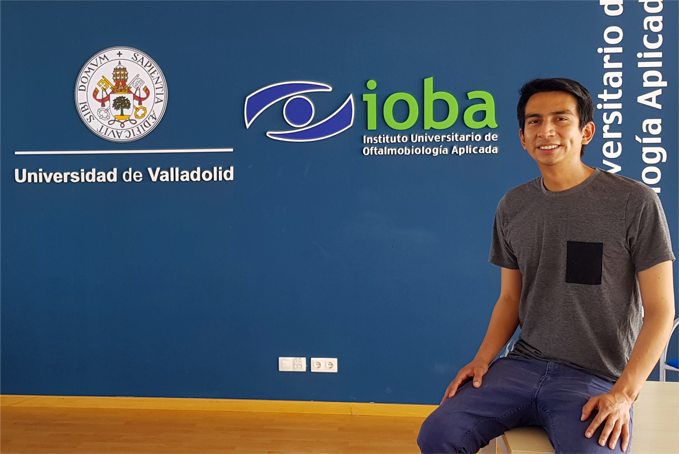
Kevin Louis Puertas Neyra
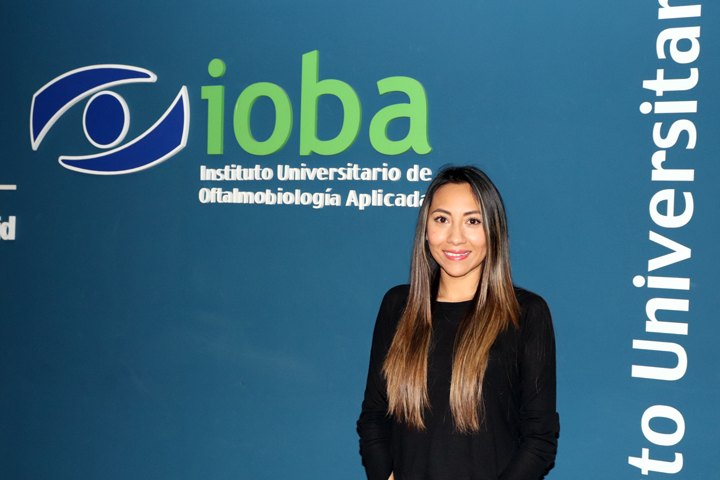
Leticia Adriana Hernández Rodríguez
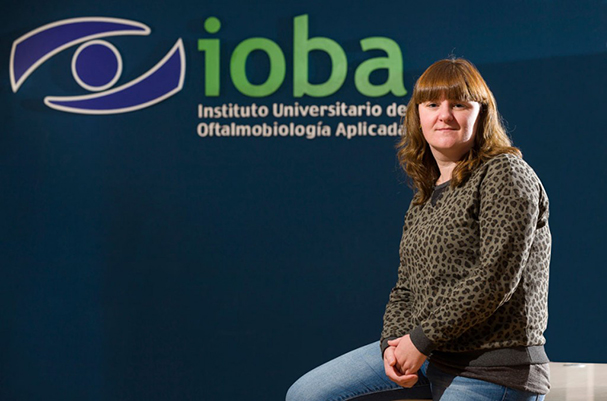
Maite García Gutiérrez
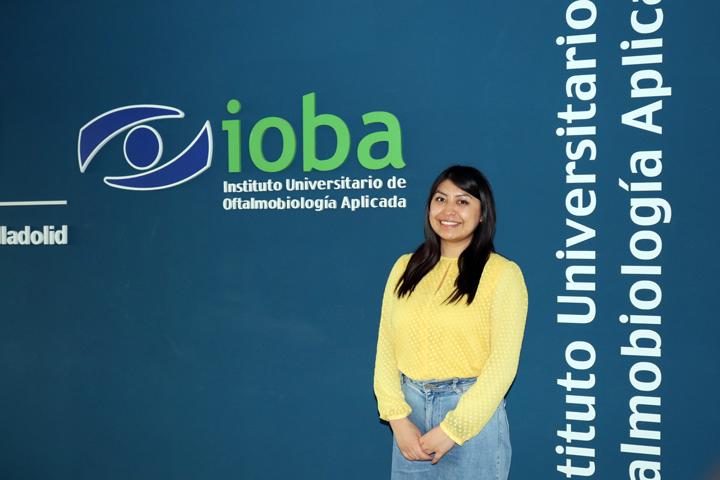
Nadia Regina Galindo Cabello
Objetivos
Objetivos
- Creación de redes multidisciplinares que permitan el desarrollo de proyectos traslacionales con especial interés en la incorporación y desarrollo de las terapias avanzadas
- Desarrollo y perfeccionamiento de modelos experimentales que permitan estudios de seguridad y eficacia
- Investigación enfocada al conocimiento de los procesos patogénicos que intervienen en algunas patologías retinianas con el fin de identificar nuevos biomarcadores de riesgo y nuevas dianas terapéuticas.
- Organización y liderazgo en la creación de elaboración de estudios clínicos uni y multicentricos
- Colaboración con las asociaciones de pacientes de enfermedades de la retina
Objectives
- Creation of multidisciplinary networks allowing the development of translational projects with special interest in the incorporation and development of advanced therapies into the clinic
- Development and improvement of experimental models allowing studies of safety and efficacy
- Research focused in increasing the knowledge of the pathogenic processes involved in some retinal pathologies in order to identify new risk biomarkers and new therapeutic targets.
- Organization and leadership in the creation of single and multicenter clinical studies
- Collaboration with associations of patients with retinal diseases
Líneas de investigación desarrolladas
Líneas de investigación
1) Patología Degenerativa y Hereditaria de la Retina.
Dirigida por la Dra. Rosa Coco Martin, Profesora Titular de Oftalmología, en colaboración con el genetista clínico el Dr. Juan José Tellería Orriols, colabora en la correcta identificación de los pacientes con distrofias hereditarias de la retina facilitando el diagnóstico genético y en la implantación y desarrollo de las terapias génicas formando parte de estructuras en red nacionales y supranacionales.
2) Seguridad de productos sanitarios en Oftalmología.
Coordinada por los Dres. Cristina Andrés Iglesias (Investigadora), Ivan Fernandez-Bueno (Profesor Ayudante Doctor de Oftalmología) y J. Carlos Pastor (Catedrático de Oftalmología). Colaboran los Dres. Antonio Dueñas, catedrático de Toxicología y José Javier Castrodeza, catedrático de Epidemiologia. Desde hace muchos años el IOBA trabaja en la evaluación de la biocompatibilidad de los dispositivos médicos usados en Oftalmología pero durante los últimos años este grupo se ha volcado en dar respuesta a los casos de toxicidad ocular causada por el uso de perfluorocarbonados líquidos toxicos en la cirugía ocular. Se trabaja también en análisis de seguridad y en reducción de complicaciones de “dispositivos médicos” utilizados en cirugía oftálmica tales como el aceite de silicona, colorantes de membrana limitante interna, etc.
3) Terapia celular en patología retiniana y Neuroprotección en la retina
Se trata de dos líneas con muchos puntos en común. Dirigida por los Dres. Girish Kumar Srivastava (terapia celular), Investigador Senior, e Iván Fernández-Bueno (neuroprotección), Profesor Ayudante Doctor de Oftalmología, está enfocada en investigar y desarrollar terapias avanzadas basadas en el uso de células madre y biopolímeros para el tratamiento de las enfermedades de la retina. Así como, en el desarrollo de modelos preclínicos para evaluar los efectos de terapias neuroprotectoras y su aplicación a las patologías retinianas.
Esta línea de investigación está financiada, en parte, por el Centro en Red de Medicina Regenerativa y Terapia celular de Castilla y León.
4) Vitreoretinopatía Proliferante
Los Dres. Salvador Pastor-Idoate (Facultativo Especialista de Área en Oftalmología del Hospital Clínico Universitario de Valladolid) y Ricardo Usategui Martín (Investigador Postdoctoral de la UVa), dirigen la línea de investigación Vitreoretinopatía Proliferante y Neuroproteccion en Desprendimientos de Retina. Dentro de una línea de investigación multicéntrica denominada Proyecto Retina-4, enfocada en identificar los pacientes en riesgo de padecer complicaciones tras cirugía el desprendimiento de retina, el desarrollo de modelos animales para analizar vías moleculares de muerte celular y el desarrollo de posibles dianas terapéuticas encaminadas a la neuroprotección.
Research lines
1) Degenerative and Hereditary Pathology of the Retina.
Directed by Dr. Rosa Coco Martin, Professor of Ophthalmology, in collaboration with the clinical geneticist Dr. Juan José Tellería Orriols, it collaborates in the correct identification of patients with hereditary retinal dystrophies, facilitating genetic diagnosis and implantation and development of gene therapies as part of national and supranational network structures.
2) Safety of medical devices in ophthalmology.
Coordinated by Drs. Cristina Andrés Iglesias (Researcher), Ivan Fernandez-Bueno (Assistant Professor of Ophthalmology) and J. Carlos Pastor (Professor of Ophthalmology). Drs. Antonio Dueñas, Professor of Toxicology and José Javier Castrodeza, Professor of Epidemiology. IOBA has a large experience on the evaluation of the biocompatibility of the medical devices used in Ophthalmology, but in recent years this group has focused on responding to cases of severe ocular toxicity caused by the use of toxic perfluorocarbon liquids in ocular surgery worldwide. They are also working on safety analysis and reduction of complications of any «medical device» used in ophthalmic surgery such as silicone oil, internal limiting membrane dyes, etc.
3) Cell therapy in retinal pathology and neuroprotection in the retina
They are two lines with many points in common. Directed by Drs. Girish Kumar Srivastava (cell therapy), Senior Investigator, and Iván Fernández-Bueno (neuroprotection), Assistant Professor of Ophthalmology, is focused on researching and developing advanced therapies based on the use of stem cells and biopolymers for the treatment of diseases of the retina. As well as, in the development of preclinical models to evaluate the effects of neuroprotective therapies and their application to retinal pathologies.
This line of research is funded, in part, by the Network Center for Regenerative Medicine and Cell Therapy of Castilla y León.
4) Proliferative Vitreoretinopathy (PVR)
Drs. Salvador Pastor-Idoate (Ophthalmologist at the Hospital Clinico Universitario de Valladolid) and Ricardo Usategui Martín (Postdoctoral Researcher), direct the line of research on Proliferative Vitreoretinopathy and Neuroprotection in retina detachments. Within a multicenter research line called the Retina-4 Project, focused on identifying patients at risk of complications after surgery, the development of animal models to analyze molecular pathways of cell death and the development of possible targeted therapeutic targets for neuroprotection.
Servicios ofrecidos
Servicios ofrecidos
- Estudios de seguridad y toxicidad realizados bajo GLP
- Desarrollo y adecuación de modelos experimentales.
- Coordinación de ensayos clínicos multicentricos realizados bajo GPC
- Identificación de biomarcadores de patologías retinianas y desarrollo de modelos predictivos
- Informes técnicos
Available services
- Safety and toxicity studies carried out under GLP
- Development and adaptation of experimental models
- Coordination of multicenter clinical trials carried out under the CPG
- Identification of biomarkers of retinal pathologies and development of predictive models
- Technical reports
Patologías en estudio
Patologías en estudio
- Desprendimiento de retina y vitreoretinopatia proliferante
- Degeneraciones y distrofias hereditarias de la retina
- Patología isquémica del nervio óptico
Diseases under study
- Retinal detachment and proliferative vitreoretinopathy
- Hereditary degenerations and dystrophies of the retina
- Ischemic pathology of the optic nerve
Principales logros
1) Patología Degenerativa y Hereditaria de la Retina.
Los logros más significativos han sido:
- La creación y mantenimiento de la Cátedra Novartis de Distrofias y Degeneraciones Retinianas, financiada por Novartis Farmacéutica S.A. dirigida por la Dra. R. Coco.
- Puesta en marcha del Observatorio Nacional de Enfermedades Raras Oculares (ONERO) con sede en la Universidad de Valladolid, junto conotros miembros de OFTARED (Red Temática de Oftalmologia del Instituto de Salud Carlos III), y Asociaciones de Pacientes con el objetivo de impulsar el Registro Nacional de Enfermedades Raras del Instituto de Salud Carlos III.
- La Dra. Coco ha coordinado dos guías de práctica clínica para la Sociedad Española de Retina y Vítreo, y también una guía de práctica clínica para el Ministerio de Sanidad (https://portal.guiasalud.es/gpc/distrofias-hereditarias-retina/) sobre el manejo de las distrofias hereditarias de la retina.
- En colaboración con el Servicio de Oftalmología del Hospital Clínico Universitario se ha obtenido el estatus de “Centro Asociado” de la European Reference Network de Oftalmología (ERN-EYE).
2) Seguridad de productos sanitarios en Oftalmología.
Logros más significativos:
- Patente de un método directo de evaluación de seguridad (Patent WO 2017/207845: Method for evaluating the cytotoxicity of chemicals) que ha conseguido la Patente Europea (EP2080.12-PACE) y que ha sido validado externamente: «External validation of a medical devices cytotoxicíty testing method: IOBA-CYTOTEST’. Final Report Study Code: 4465 14 november 2O19. Gaiker
- Convenio con la Agencia Española de Medicamentos y Productos Sanitarios (AEMPS) por el que el IOBA se convierte en organismo asesor (BOE Núm. 255 lunes 22 de octubre de 2018).
- Miembros del grupo son vocales del grupo de trabajo de normalización CTN 91 Implantes quirúrgicos a través de UNE y han contribuido a modificar la última versión de la norma ISO/FDIS 16672.2 (Ophthalmic implants — Ocular endotamponades).
- Por último el Dr. Pastor ha sido nombrado miembro de Expamed “European Commission expert panels on medical devices and in vitro diagnostic medical devices”.
3) Terapia celular en patología retiniana y Neuroprotección en la retina
Las contribuciones más relevantes de los últimos años son las siguientes:
- Patente: Composición farmacéutica para el tratamiento y/o prevención de enfermedades retinianas degenerativas. Nº de solicitud: ES2539329
- Desarrollo de un ensayo clínico [Ensayo clínico fase III tratamiento intravítreo con MSC (PEI 15-007) en neuropatía óptica isquémica anterior no arterítica (NAION) (Cód.: PIC18/00018) 2019-2021]. En fase de reclutamiento de pacientes.
- Patente: metodo para identificar propiedades antioxidantes de un extracto de uva. Patente de invención. Matarromera y Universidad de Valladolid. P201930142.
- Dentro de la convocatoria del Ministerio de Ciencia, Innovación y Universidades, en la convocatoria de Dinamización de Redes de Investigación, se consiguió, junto con otros siete grupos españoles, formar parte de la Red Temática RED2018-102499-T, bajo el acrónimo de Retibrain (La retina un modelo para investigar neuroprotección en patologías del sistema nervioso central (SNC)).
4) Vitreoretinopatía Proliferante
Los logros más significativos de esta línea han sido:
- Patente: Método para la detección del riesgo de desarrollar vitreoretinopatía proliferante. Ángel Carracedo, María Brion, Beatriz Sobrino (CEGEN de Santiago de Compostela). José Carlos Pastor, Itziar Fernández, Maite García, Jimena Rojas, Rosa Sanabria, Rosa Coco (IOBA). Patente de invención 200702532. 27 Septiembre 2007
- Coordinación de un estudio multicéntrico con hospitales de España, Holanda, Reino Unido y Portugal, denominado Retina 4, que ha dado lugar a varias publicaciones que son referencia en ese campo
- Coordinación de diferentes estudios clínicos entre grupos de Oftared (Red Temática de Investigación Cooperativa Sanitaria del ISCIII)
- Incorporación del IOBA a la Red ARI (Advanced Retina Imaging)
Research lines
1) Degenerative and Hereditary Pathology of the Retina.
The most significant achievements have been:
- The creation and maintenance of the Novartis Chair of Retinal Dystrophies and Degenerations, financed by Novartis Farmacéutica S.A. directed by Dr. R. Coco.
- Contribution to the start-up of the National Observatory for Rare Ocular Diseases (ONERO) based at the University of Valladolid, together with other members of OFTARED (Thematic Network of Ophthalmology of the Carlos III National Institute of Health), and Patient Associations with the aim of promoting the National Registry of Rare Diseases of the Carlos III Health Institute.
- Dr. Coco has coordinated two clinical practice guides for the Spanish Society of Retina and Vitreous, and also a clinical practice guide for the Ministry of Health (https://portal.guiasalud.es/gpc/distrofias-hereditary -retina /) on the management of hereditary retinal dystrophies.
- In collaboration with the Department of Ophthalmology of the Hospital Clinico Universitario, the status of «Associated Center» of the European Reference Network of Ophthalmology (ERN-EYE) has been obtained (2019).
2) Safety of medical devices in ophthalmology.
Most significant achievements:
- Patent of a direct method of safety evaluation (Patent WO 2017/207845: Method for evaluating the cytotoxicity of chemicals) that has been obtained the European Patent (EP2080.12-PACE) and has been externally validated: «External validation of a medical devices cytotoxicity testing method: IOBA-CYTOTEST ‘. Final Report Study Code: 4465 14 november 2O19. Gaiker
- Agreement with the Spanish Agency of Medicines and Medical Devices (AEMPS) being IOBA an advisory body (BOE No. 255 Monday October 22, 2018).
- Some researchers are members of the ISO CTN 91 surgical implants standardization working group through UNE and have contributed to modify the latest version of ISO / FDIS 16672.2 (Ophthalmic implants – Ocular endotamponades).
- Finally, Dr. Pastor has been appointed a member of Expamed «European Commission expert panels on medical devices and in vitro diagnostic medical devices».
3) Cell therapy in retinal pathology and neuroprotection in the retina
The most relevant contributions in recent years are the following:
- Patent: Pharmaceutical composition for the treatment and / or prevention of degenerative retinal diseases. Application number: ES2539329
- Development of a clinical trial [Phase III clinical trial intravitreal treatment with MSC (PEI 15-007) in non-arteritic anterior ischemic optic neuropathy (NAION) (Code: PIC18 / 00018) 2019-2021]. Recruiting patients.
- Patent: Method to identify antioxidant properties of a grape extract. Invention patent. Matarromera SL and University of Valladolid. P201930142.
- Within the call of the Ministry of Science, Innovation and Universities, in the call for Dynamization of Research Networks, together with seven other Spanish groups, we have got to form part of the Thematic Network RED2018-102499-T, under the acronym de Retibrain (The retina a model to investigate neuroprotection in pathologies of the central nervous system (CNS)).
4) Proliferative Vitreoretinopathy (PVR)
The most significant achievements of this line have been:
- Patent: Method for detecting the risk of developing proliferative vitreoretinopathy. Ángel Carracedo, María Brion, Beatriz Sobrino (CEGEN from Santiago de Compostela). José Carlos Pastor, Itziar Fernández, Maite García, Jimena Rojas, Rosa Sanabria, Rosa Coco (IOBA). Invention patent 200702532. September 27, 2007
- Coordination of a multicenter study with hospitals in Spain, the Netherlands, the United Kingdom and Portugal, named Retina 4,
- Coordination of different clinical studies between groups of Oftared (ISCIII Health Cooperative Research Thematic Network)
- Incorporation of the IOBA into the ARI Network (Advanced Retina Imaging)
Patentes
Método para detección del riesgo de desarrollar vitreorretinopatía proliferante (VRP): Método que permite identificar el riesgo de desarrollar VRP en aquellas personas sometidas a cirugía ocular. Concretamente, el método se basa en la detección de una serie de polimorfismos de un solo nucleótido (SNP) o grupos de SNPs (Haplotipos) que predisponen al desarrollo de la enfermedad.
Composición farmacéutica para el tratamiento y/o prevención de enfermedades retinianas degenerativas: Composición basada en la combinación de células madre y factores neurotróficos con aplicabilidad en el tratamiento y/o prevención de algunas enfermedades retinianas degenerativas.
Proyectos principales
1) Patología Degenerativa y Hereditaria de la Retina.
Alguno de los proyectos de esta línea de investigación que en los 5 años últimos han recibido financiación son:
- Estudio comparativo de la incidencia y repercusión clínica de las opacidades vítreas iatrogénicas en pacientes con degeneración macular asociada a la edad en tratamiento antiangiogénico usando dos tipos diferentes de jeringas. Gerencia regional de salud, Consejería de Sanidad, Junta de Castilla y León. Referencia GRS 1919 Enero a diciembre de 2020. Financiación: 12.114€
- Estudio de los factores dietéticos que ocasionan la DMAE y de su relación con el pigmento macular. Financia: Fundación Eugenio Rodríguez Pascual. Referencia 063/143811. Noviembre 2015 a Diciembre 2016. Financiación: 14.154€
2) Seguridad de productos sanitarios en Oftalmología.
Algunos de los proyectos financiados asociados a la evaluación de seguridad/toxicidad de dispositivos médicos:
- Evaluación del índice H en muestras de perfluoro-n-octano. Financia: Agencia Española del Medicamento y Producto Sanitario (AEMPS). Desde 29/08/2018 hasta 30/12/2019. Financiacion 14.900€
- Evaluación de la seguridad y de la bioactividad de láminas de reconstrucción orbitaria en conejo. Financia: AJL Ophthalmic S.A., Vitoria, España. Desde 08/02/2018 hasta 07/08/2020. Financiación: 10.095,00€
- Evaluación de la citotoxicidad aguda de AJL-DUAL BLUE en cultivo celular de epitelio pigmentario de la retina (EPR). AJL Ophthalmic S.A., Vitoria, España. Desde 22/07/2016 hasta 21/07/2018. Financiación: 10.715,00€
- Evaluación de la seguridad y de la tolerancia de una mezcla de silicona y F6H8 in vitro. AJL Ophthalmic S.A., Vitoria, España. Desde 04/03/2016 hasta 03/03/2018. Financiacion: 6.706€
- Evaluación de la seguridad y de la bioactividad de un implante oftálmico en conejo. AJL Ophthalmic S.A., Vitoria, España. Desde 15/09/2015 hasta 14/09/2017. Financiación: 10.050€
3) Terapia celular en patología retiniana y Neuroprotección en la retina
Dentro de esta línea de investigación, algunos de los proyectos que han recibido financiación son:
- Ensayo clínico fase III tratamiento intravítrea con MSC (PEI 15-007) en neuropatía óptica isquémica anterior no arterítica (NAION). Financia: Instituto de Salud Carlos III. Duración: 2019 hasta 2021. Financiación: 950 €
- Composición farmacéutica con capacidad neuroprotectora potenciada para la degeneración retiniana: evaluación preclínica de seguridad. Financia: Consejería de Educación, Junta de Castilla y León. Duración: desde 2017 hasta 2019. Financiación: 000 €
- Evaluación de la seguridad de la inyección intravítrea de células madre mesenquimales como posible tratamiento para pacientes con neuropatía óptica isquémica anterior no arterítica aguda. Financia: Consejería de Educación, Junta de Castilla y León. Desde 2015 hasta 2016. Financiacion: 000 €
- Complemento a un ensayo clínico en Fase II de la Seguridad de las células madre mesenquimales 15-007 MSV en inyección intravítrea como posible tratamiento de pacientes con “neuropatía óptica isquémica anterior no arterítica aguda” (Neurostem). Gerencia Regional del Sacyl. Financiacion: 15.444 €
4) Vitreoretinopatía Proliferante
Algunos de los proyectos de esta línea de investigación en los 5 años últimos que han recibido financiación son:
- Validación de Biomarcadores de estrés crónico en saliva, lágrima y pelo en pacientes con retinitis pigmentosa. Financia: Consejería de Sanidad, Junta de Castilla y León. Ddesde 2019 hasta 2020. Financiación: 729€
- Estudio clínico multicéntrico y prospectivo. para validar dos biomarcadores ubicados. en los genes p53 y mdm2 en la predicción de. los resultados funcionales de la cirugía del. desprendimiento de retina regmatógeno. Financia: Consejería de Sanidad, Junta de Castilla y León. 2018 Financiación: 338€
- Incorporación del IOBA al ARI (Advanced Retinal Imaging) network, basada en OCT de tecnología swept-source para la detección de biomarcadores estructurales en patología de la retina. Subprograma Estatal de Infraestructuras de Investigación y Equipamiento Científico-Técnico (Plan Estatal I+D+i 2017-2020) referencia proyecto: eqc2018-005329-p. Cantidad concedida: 130.500 €
Research lines
1) Degenerative and Hereditary Pathology of the Retina.
Some of the projects in this line of research that have received funding in the last 5 years are:
- Comparative study of the incidence and clinical repercussion of iatrogenic vitreous opacities in patients with age-related macular degeneration in antiangiogenic treatment using two different types of syringes. Regional Health Ministry, Junta de Castilla y León. Reference GRS 1919. January to December 2020. Budget: € 12,114
- Study of the dietary factors that cause AMD and its relationship with the macular pigment. Financed by: Eugenio Rodríguez Pascual Foundation. Reference 063/143811. November 2015 to December 2016. Budget: € 14,154
2) Safety of medical devices in ophthalmology.
Some of the funded projects associated with the safety / toxicity assessment of medical devices:
- Evaluation of the H index in perfluoro-n-octane samples. Funding: Spanish Agency for Medicines and Medical Devices (AEMPS). From 08/29/2018 to 12/30/2019. Budget € 14,900
- Evaluation of the safety and bioactivity of orbital reconstruction sheets in rabbits. Financed by: AJL Ophthalmic S.A., Vitoria, Spain. From 02/08/2018 to 08/07/2020. Budget: € 10,095.00
- Assessment of the acute cytotoxicity of AJL-DUAL BLUE in retinal pigment epithelium (RPE) cell culture. AJL Ophthalmic S.A., Vitoria, Spain. From 07/22/2016 to 07/21/2018. Budget: € 10,715.00
- Evaluation of the safety and tolerance of a mixture of silicone and F6H8 in vitro.AJL Ophthalmic S.A., Vitoria, Spain. From 03/04/2016 to 03/03/2018. Budget: € 6,706
- Evaluation of the safety and bioactivity of a rabbit ophthalmic implant.AJL Ophthalmic S.A., Vitoria, Spain. From 09/15/2015 to 09/14/2017. Budget: € 10,050
3) Cell therapy in retinal pathology and neuroprotection in the retina
Within this line of research, some of the projects that have received funding are:
- Phase III clinical trial intravitreal MSC treatment (PEI 15-007) in non-arteritic anterior ischemic optic neuropathy (NAION). Funding: Carlos III Health Institute. Duration: from 2019 to 2021. Budget: € 345,950
- Pharmaceutical composition with enhanced neuroprotective capacity for retinal degeneration: preclinical safety assessment. Financing: Ministry of Education, Junta de Castilla y León. Duration: from 2017 to 2019. Budget: € 120,000
- Evaluation of the safety of intravitreal injection of mesenchymal stem cells as a possible treatment for patients with acute non-arteritic anterior ischemic optic neuropathy. Financing: Ministry of Education, Junta de Castilla y León. From 2015 to 2016. Budget: € 30,000
- Complement to a Phase II clinical trial of the Safety of Mesenchymal Stem Cells 15-007 MSV by Intravitreal Injection as Possible Treatment of Patients with «Acute Non-arteritic Anterior Ischemic Optic Neuropathy» (Neurostem). Sacyl Regional Management. Budget: € 15,444
4) Proliferative Vitreoretinopathy (PVR)
Some of the projects in this line of research in the last 5 years that have received funding are:
- Validation of Biomarkers of chronic stress in saliva, tears and hair in patients with retinitis pigmentosa. Financing: Ministry of Health, Junta de Castilla y León. From 2019 to 2020. Budget: € 12,729
- Multicenter and prospective clinical study to validate two biomarkers located. in the p53 and mdm2 genes in the prediction of functional results of retinal detachment surgery. Financing: Ministry of Health, Junta de Castilla y León. 2018 Budget: € 9,338
- Incorporation of the IOBA into the ARI (Advanced Retinal Imaging) network, based on OCT of swept-source technology for the detection of structural biomarkers in retinal pathology. State Subprogramme for Research Infrastructures and Scientific-Technical Equipment (National R&D plan 2017-2020) project reference: eqc2018-005329-p. Amount awarded: € 130,500
Principales socios y colaboradores
Principales clientes y colaboradores/Main clients and collaborators
Empresas/ Companies:
- Abbvie Laboratories Inc., IL, EE.UU.
- AJL Ophthalmics, Vitoria, España
- Aura Biosciences Inc., MA, EE.UU.
- Novartis S.A., Barcelona, España
- Paloma Pharmaceuticals, MA, EE.UU.
- Xoma Corporation, CA, EE.UU.
- Cadila Healthcare Limited., Ahmedabad, India.
- ProRetina Therapeutics, Madrid, España
- SOM Biotech, Barcelona, España
- Alcon Research & Development, Barcelona.
- Novaliq GmbH, Heidelberg, Alemania
- Arcadophtha, Toulouse, Francia
- Ferrer Internacional, Barcelona, España
- DORC BV, Zuidiand, The Netherlands
- Leon Research, Leon, España
- Citospin, Valladolid, España
Colaboradores/collaborators:
- Miembros de Ofared (oftared.es)
- Miembros de la Red Retibrain
- Miembros del Centro en Red de Medicina Regenerativa y Terapia Celular de Castilla y León
- Grupos de Investigación de la Universidad de Valladolid
- Laboratorio de Técnicas Instrumentales de la Universidad de Valladolid
- Servicio de animales de la Universidad de Valladolid
Plan de trabajo
Los retos del futuro
El grupo de Retina del IOBA tiene planteados una serie de retos donde concentrar sus esfuerzos en los próximos años:
El desarrollo de terapia celular en patologías retinianas y de nervio óptico
La incorporación de la terapia génica
La búsqueda de agentes neuroprotectores para la patología retiniana incluyendo el desprendimiento de retina
La profilaxis de la vitreoretinopatía proliferante
La mejora de la seguridad de los productos sanitarios usados en cirugía ocular
La colaboración con empresas para el desarrollo de sistemas eficaces de farmacovigilancia de los productos sanitarios
The challenges of the future
IOBA Retina group has a series of challenges to focus its efforts on in the coming years:
The development of cell therapy in retinal and optic nerve pathologies
Incorporating gene therapy
The search for neuroprotective agents for retinal pathology including retinal detachment
Prophylaxis of proliferating vitreoretinopathy
Improving the safety of medical devices used in eye surgery
Collaboration with companies to develop effective pharmacovigilance systems for medical devices
Infraestructuras:
Infraestructuras:
Laboratorio de Retina.
Laboratorio de Patología Ocular.
Laboratorio de Cultivos celulares.
Laboratorio de Biología molecular.
Quirófano de experimentación animal.
Servicio de Investigación y Bienestar Animal de la Universidad http://www.uva.es/export/sites/uva/3.investigacion/3.3.serviciosdeapoyo/3.4.4.siba/3.08.01.servicios/index.html
Laboratorio de Técnicas instrumentales de la Universidad https://www.uva.es/export/sites/uva/3.investigacion/3.1.estructuras-de-investigacion-en-la-UVa/3.1.7.catalogoinvestigacion/Laboratorio-de-Tecnicas-Instrumentales-LTI/
Oficina de Transferencia de Resultados de la Fundación General de la Universidad de Valladolid. La Unidad de Innovación apoya en la búsqueda de líneas de financiación, asesora en la redacción de contratos y convenios y se ocupa de la gestión económica y administrativa de proyectos de investigación de la Universidad de Valladolid. Además, este tipo de colaboración facilita a las entidades el acceso a equipamiento e infraestructuras y la interacción con los investigadores.
https://cytuva.funge.uva.es/proyecto.php?id=569
Infrastructures:
Retina Laboratory.
Ocular Pathology Laboratory.
Laboratory of cell cultures.
Molecular Biology Laboratory.
Operating room for animal experimentation.
Animal Research and Welfare Service of the University http://www.uva.es/export/sites/uva/3.investigacion/3.3.serviciosdeapoyo/3.4.4.siba/3.08.01.servicios/index.html
Laboratory of Instrumental Techniques of the University https://www.uva.es/export/sites/uva/3.investigacion/3.1.estructuras-de-investigacion-en-la-UVa/3.1.7.catalogoinvestigacion/Laboratorio-de -Techniques-Instrumental-LTI /
Results Transfer Office of the General Foundation of the University of Valladolid. The Innovation Unit supports the search for financing lines, advises on the drafting of contracts and agreements and deals with the economic and administrative management of research projects at the University of Valladolid. In addition, this type of collaboration provides entities with access to equipment and infrastructure and interaction with researchers.
https://cytuva.funge.uva.es/proyecto.php?id=569
Actividades
Códigos AT
A07 Bioquímica
A11 Biotecnología
A14 Biología celular
A20 Genética
A26 Medicina
A32 Patología
A34 Fisiología
Códigos CNAE
73 Investigación y desarrollo
85 Actividades sanitarias y veterinarias, servicios sociales
Códigos UNESCO
2403 Bioquímica
2407.01 Cultivo celular
2410.07 Genética humana
2411.15 Fisiología de la visión
2412 Inmunología
3201.09 Oftalmología
3202 Epidemiología
3209.03 Evaluación de medicamentos
3213.09 Cirugía ocular
3312 Tecnología de los materiales
Información adicional
Doctorado en Ciencias de la Visión.
Máster en Investigación en Ciencias de la Visión.
Máster en Subespecialidades Oftalmológicas: Especialidad en Retina

